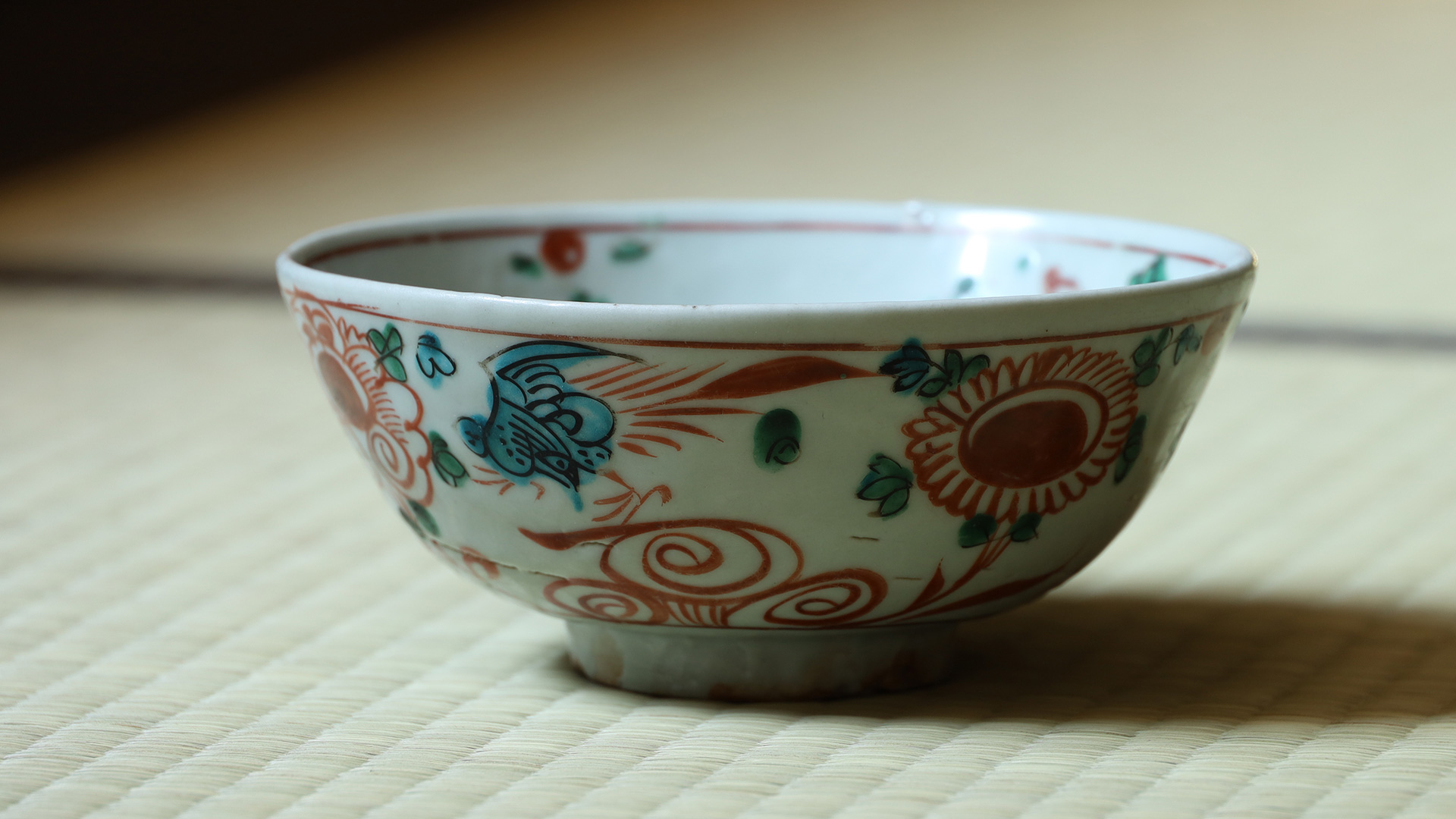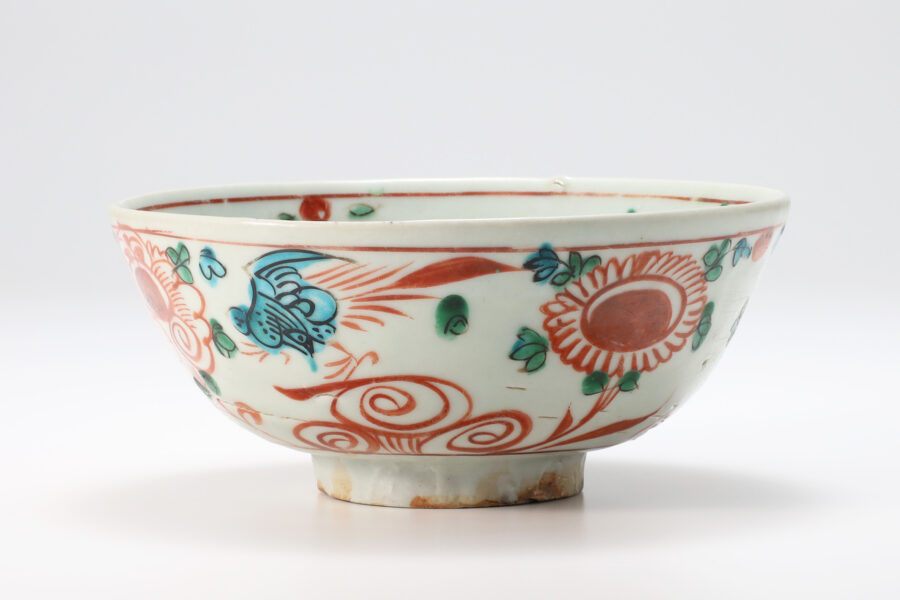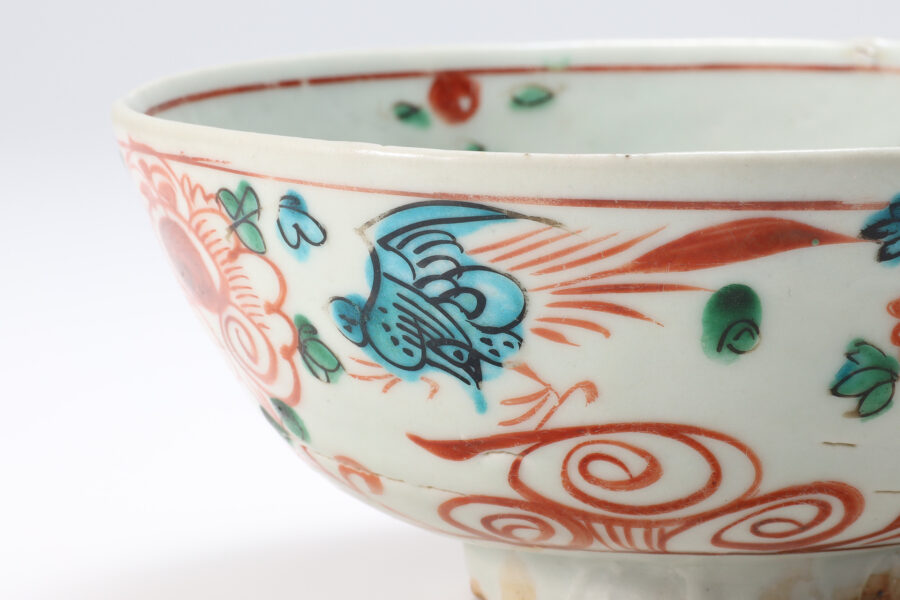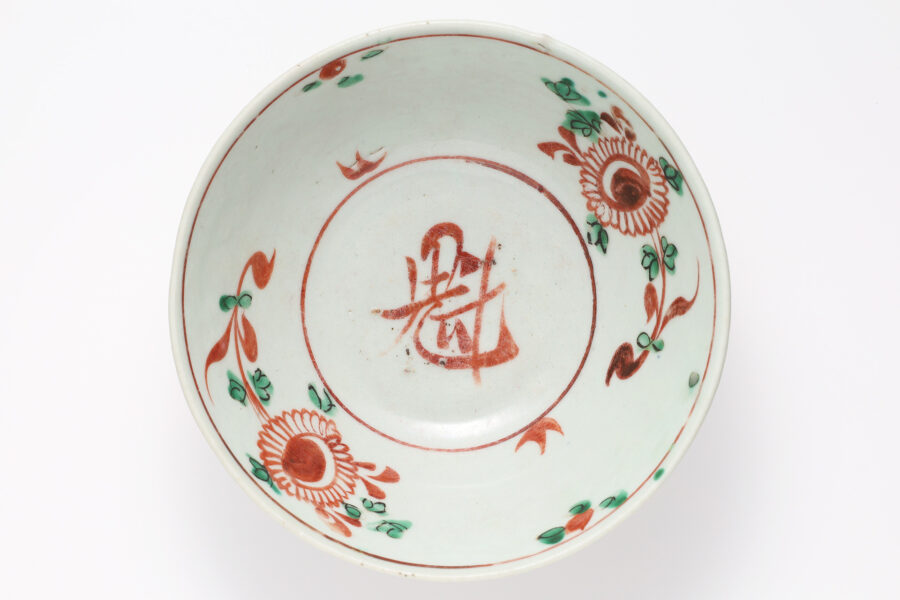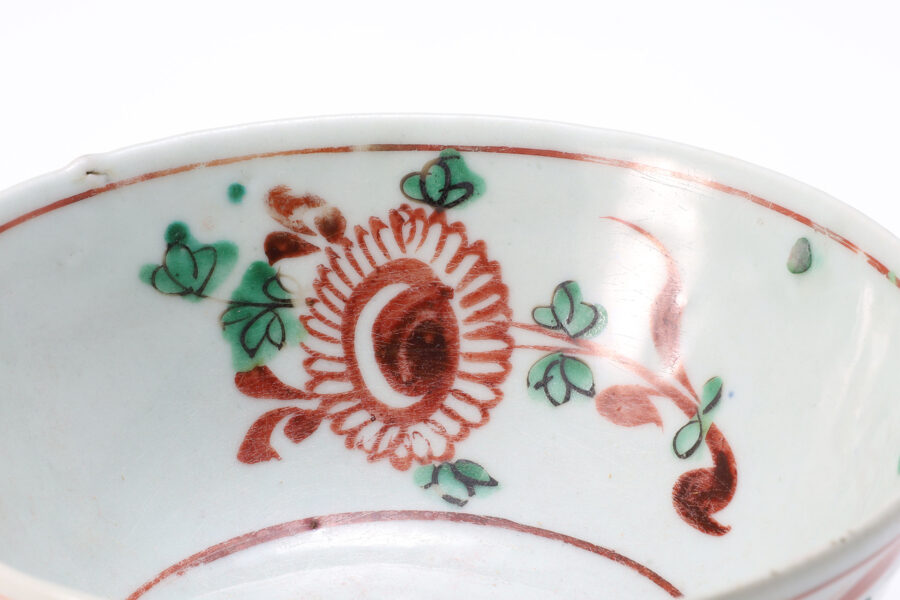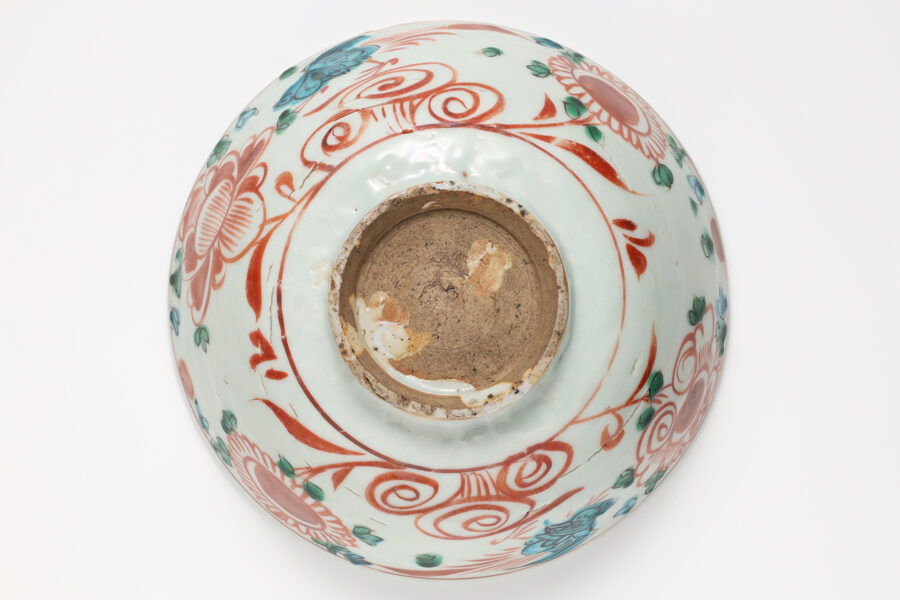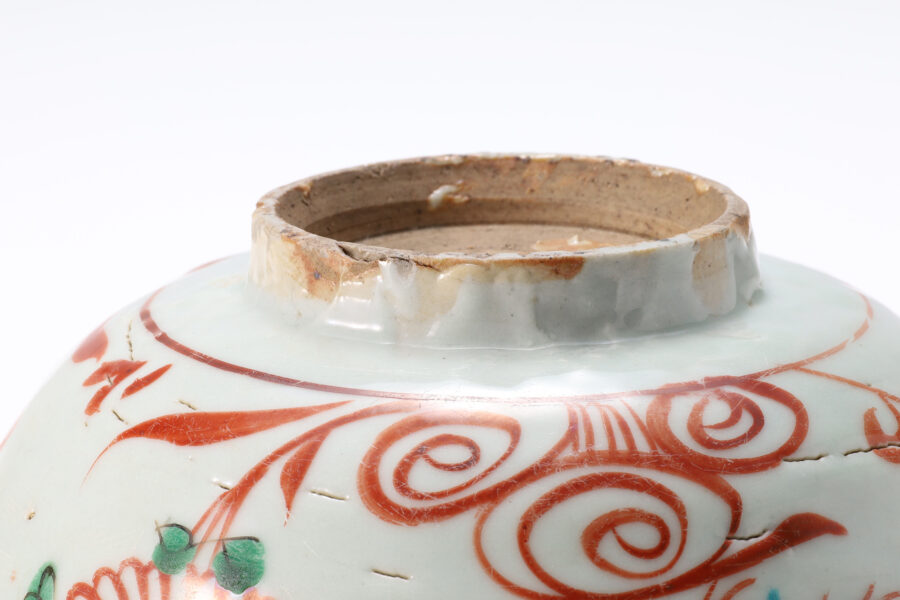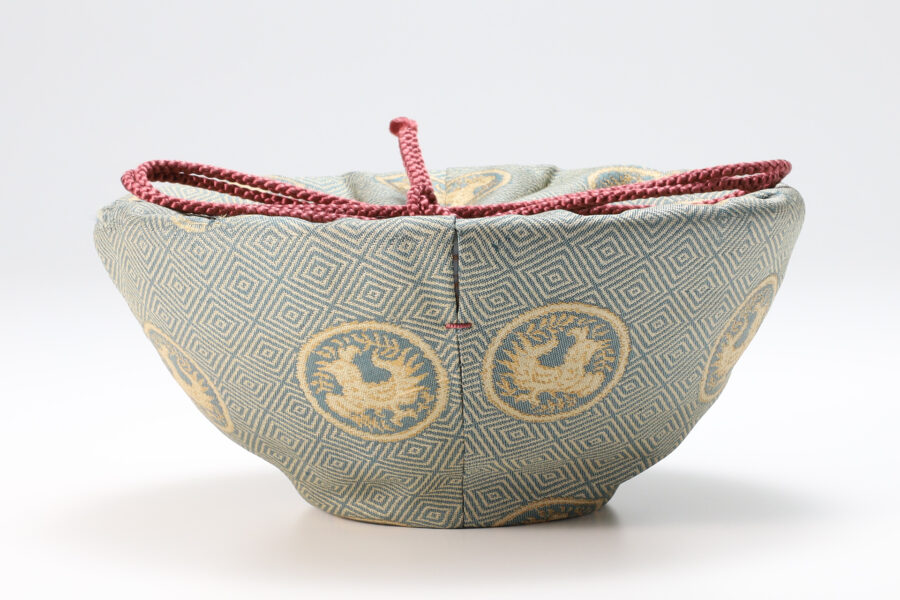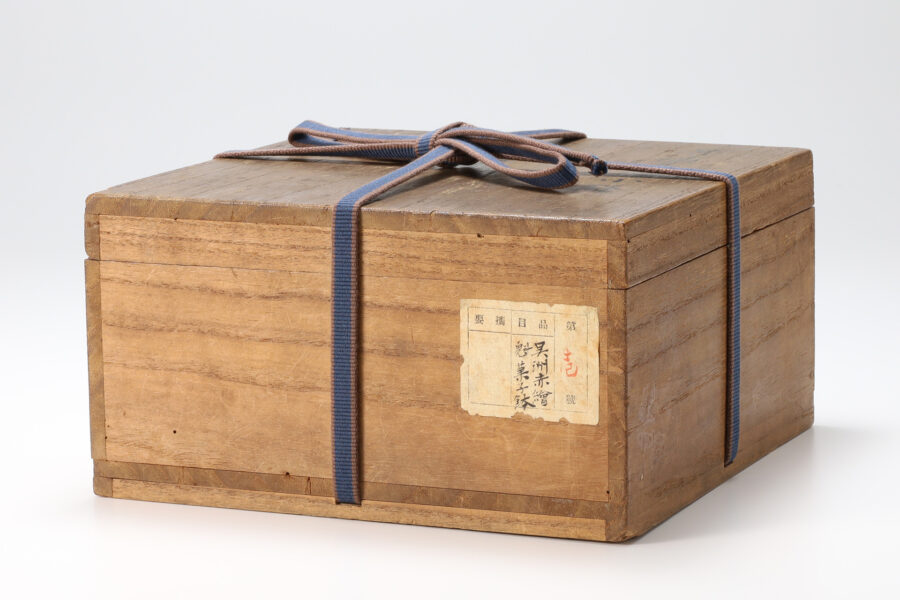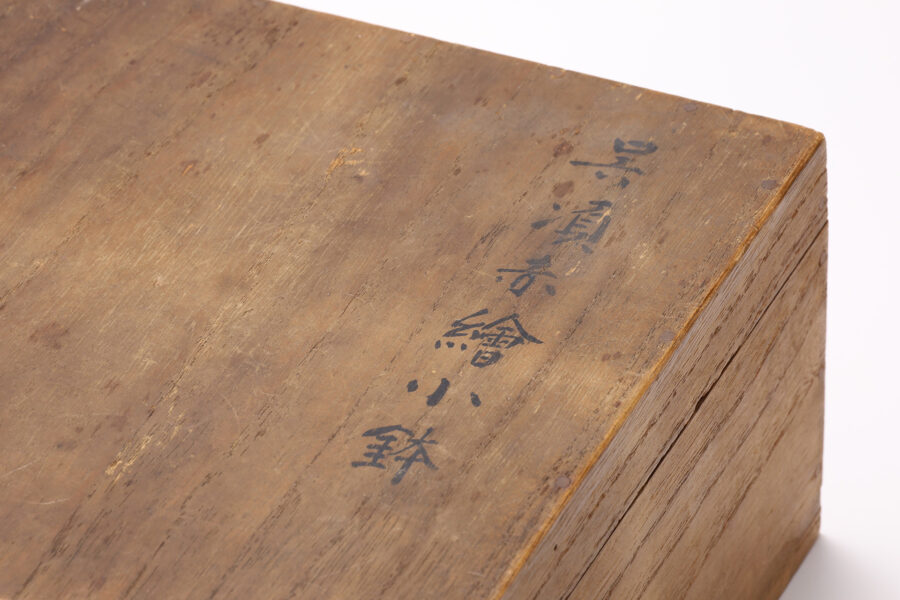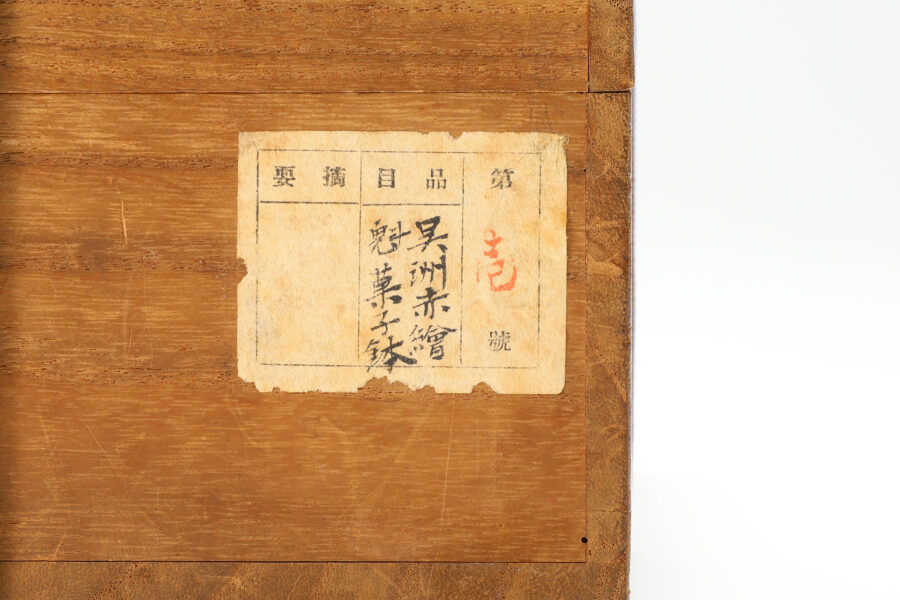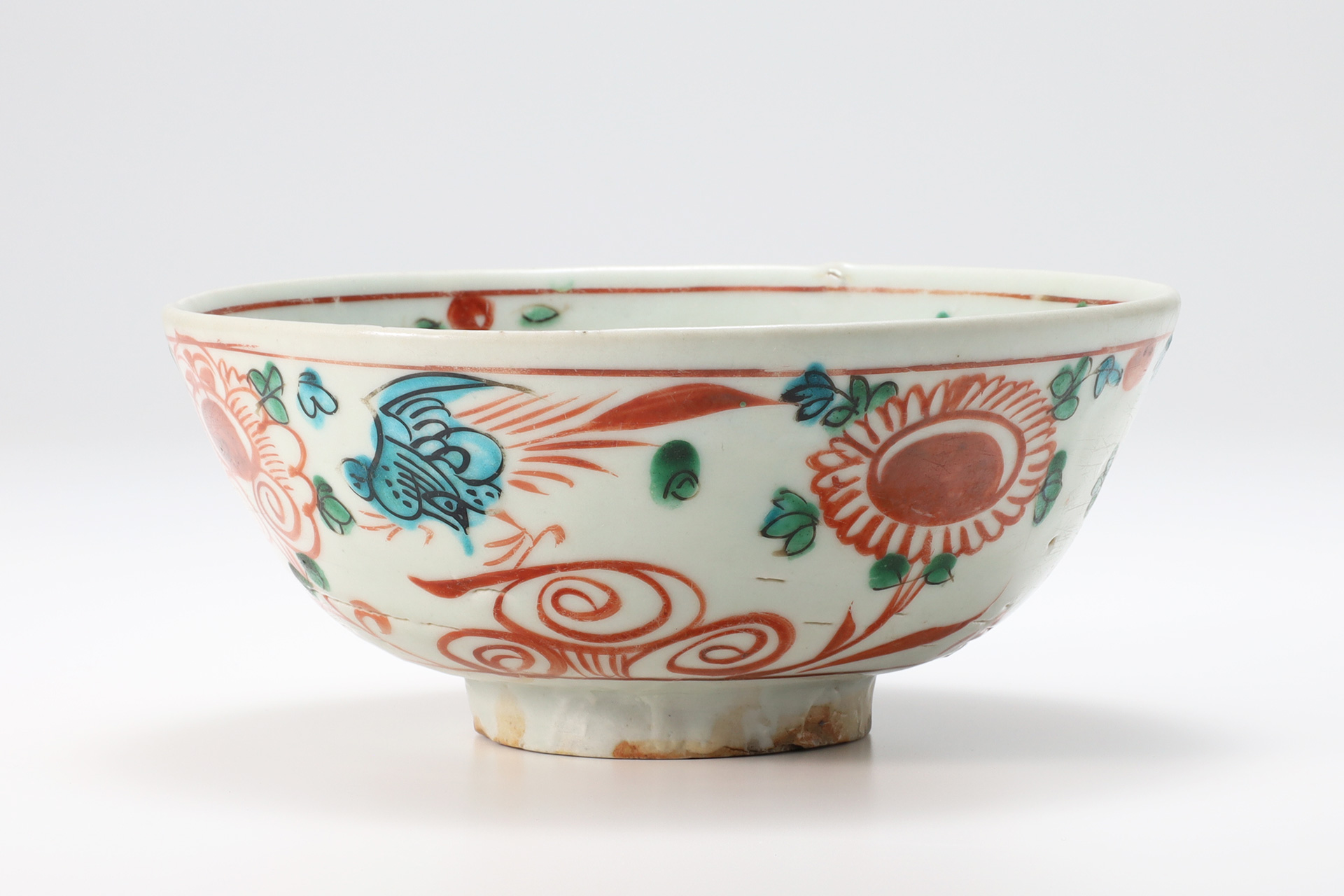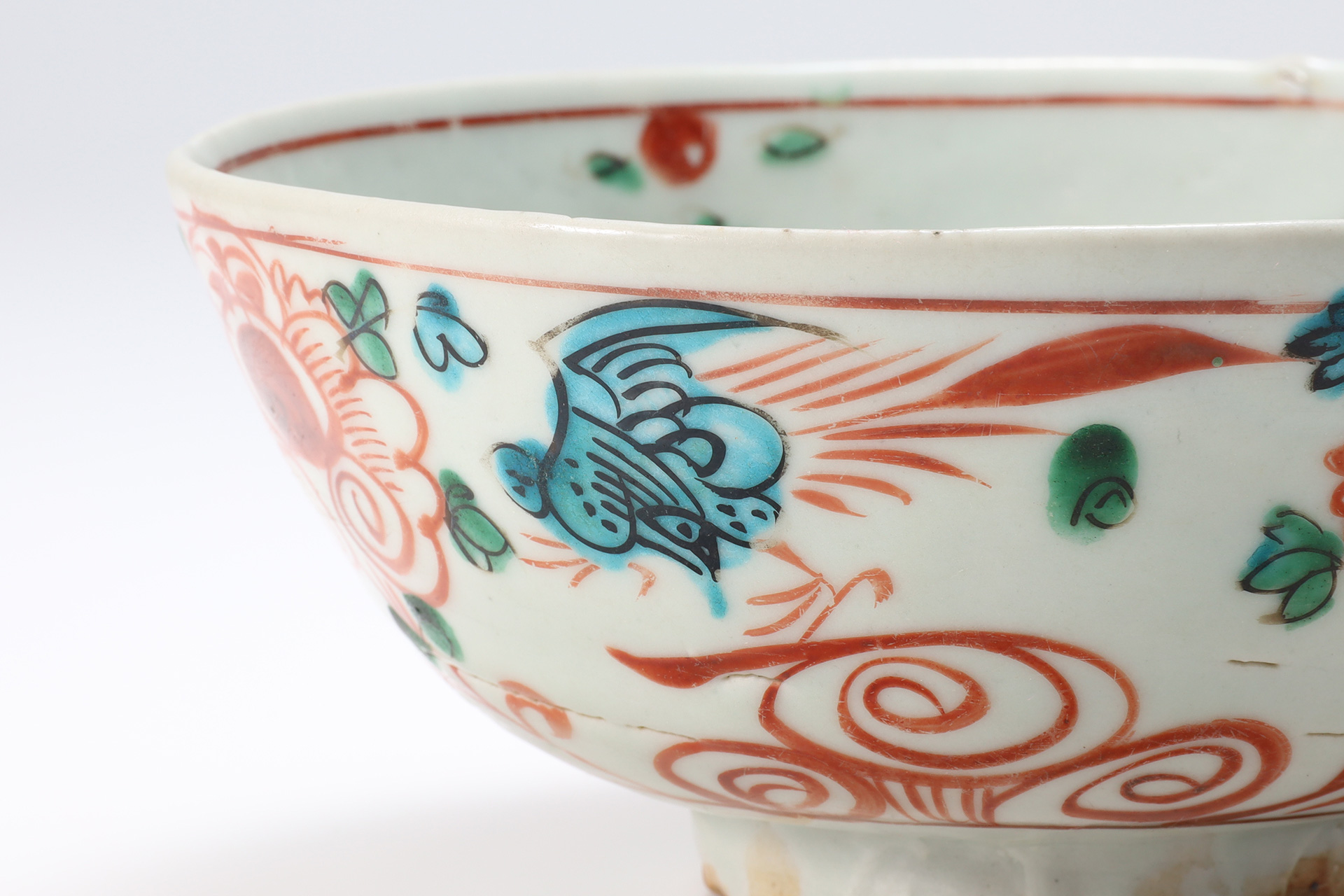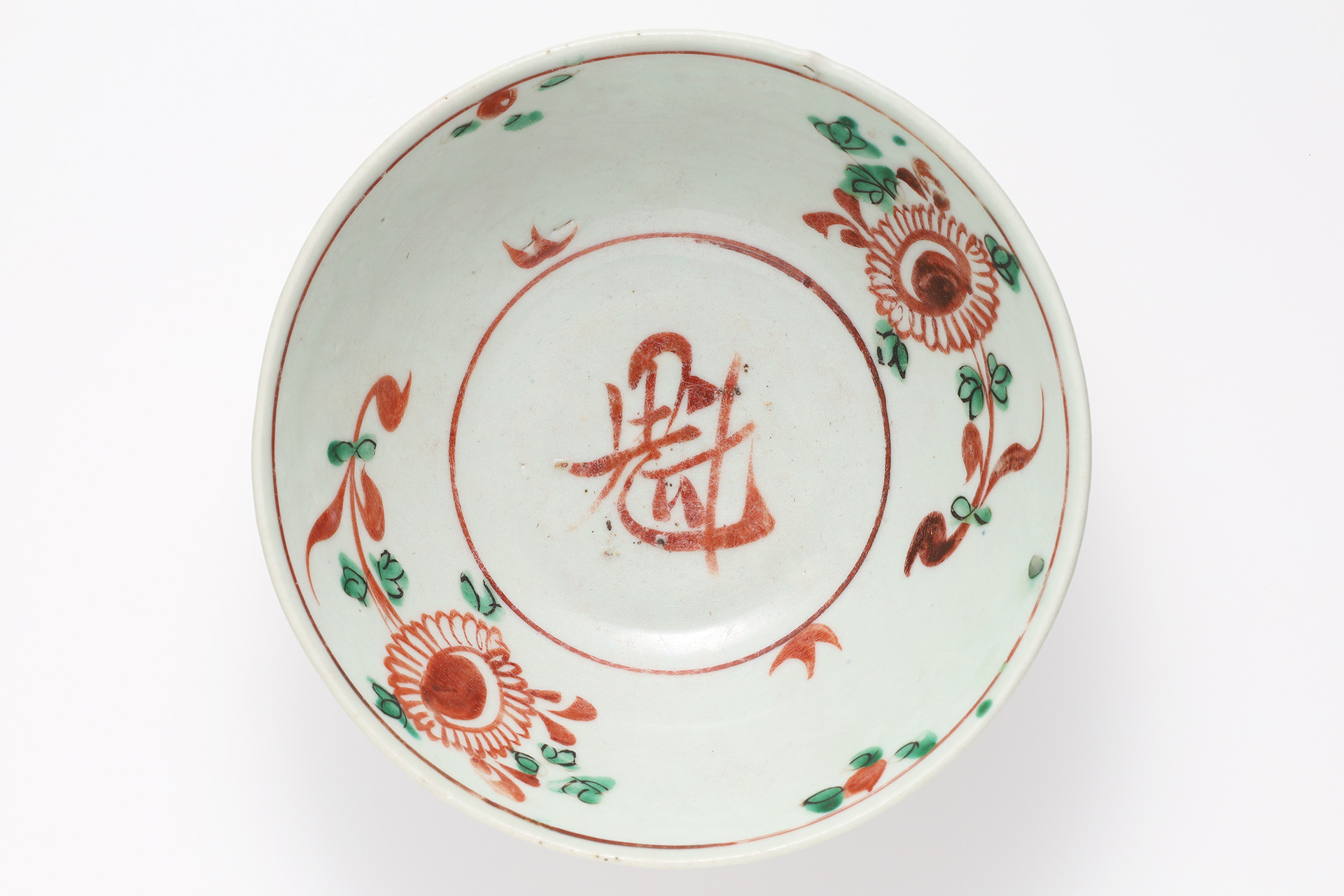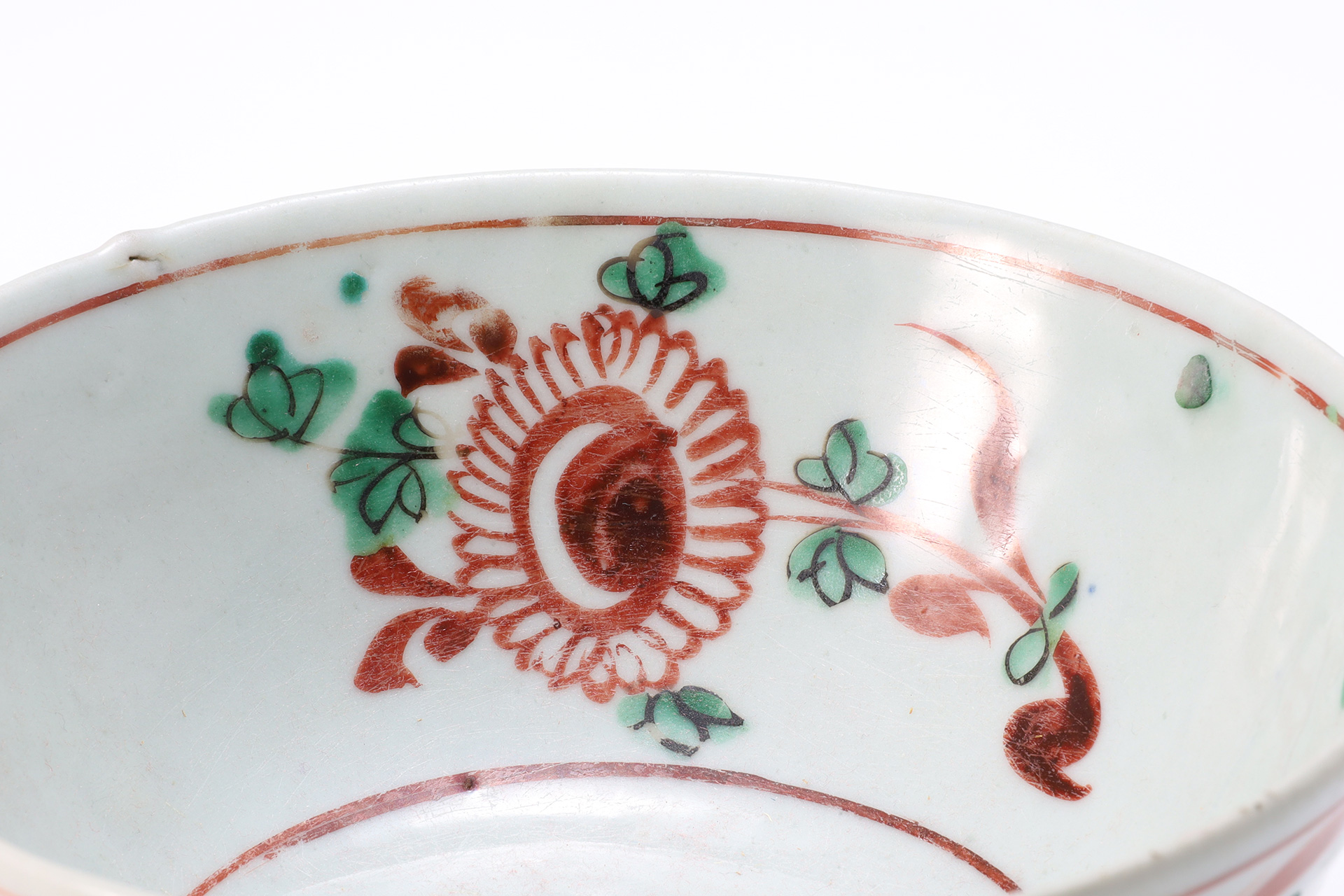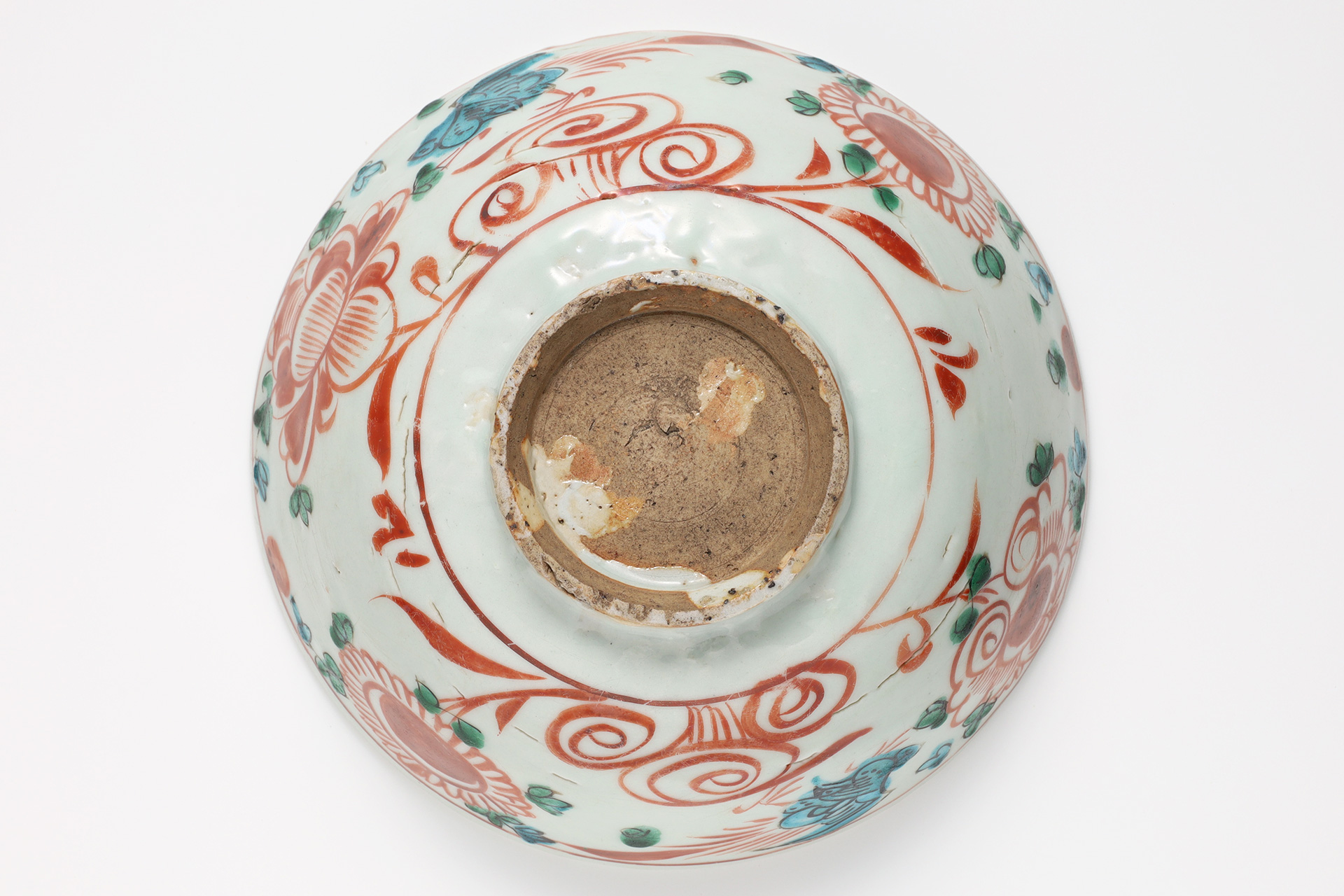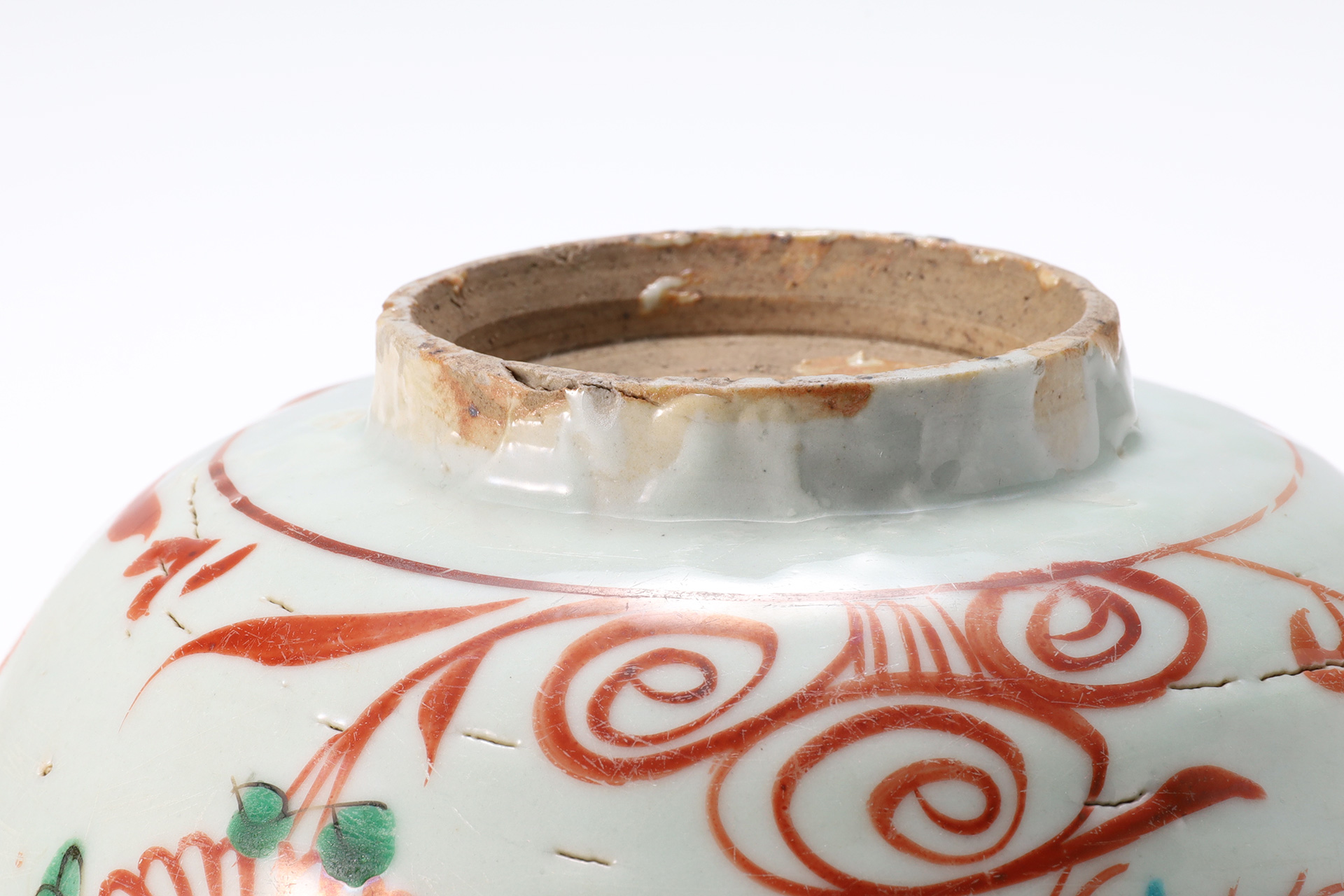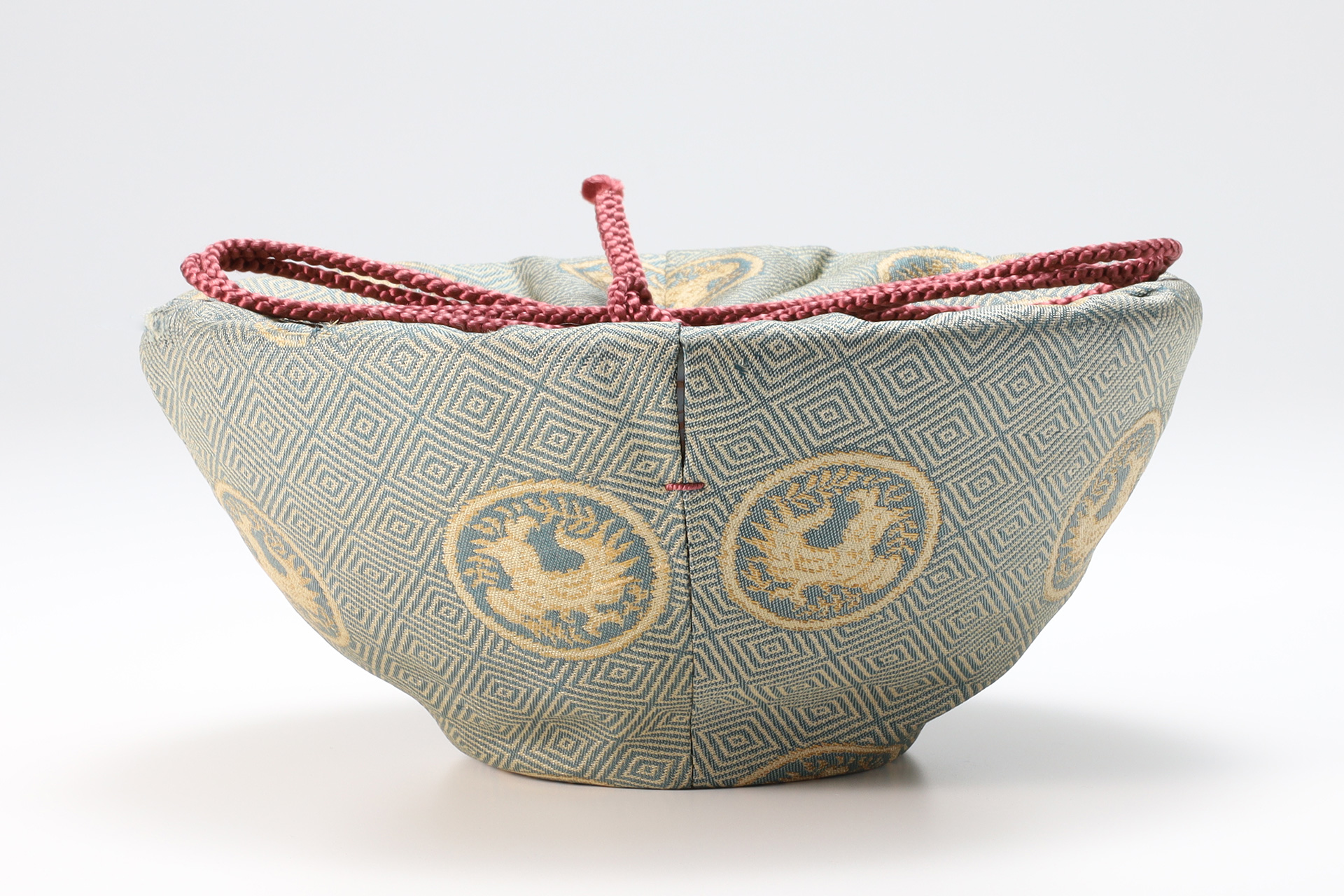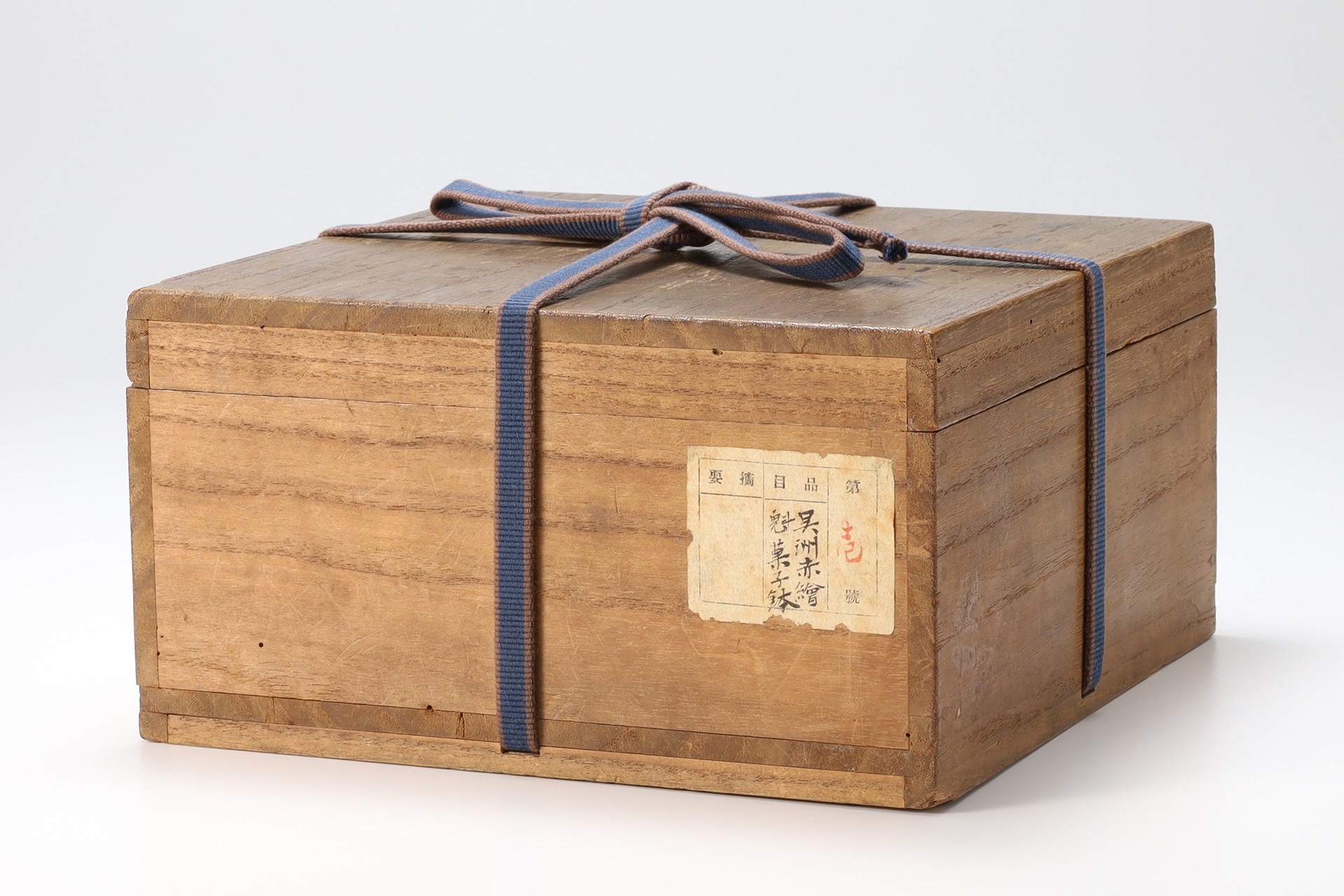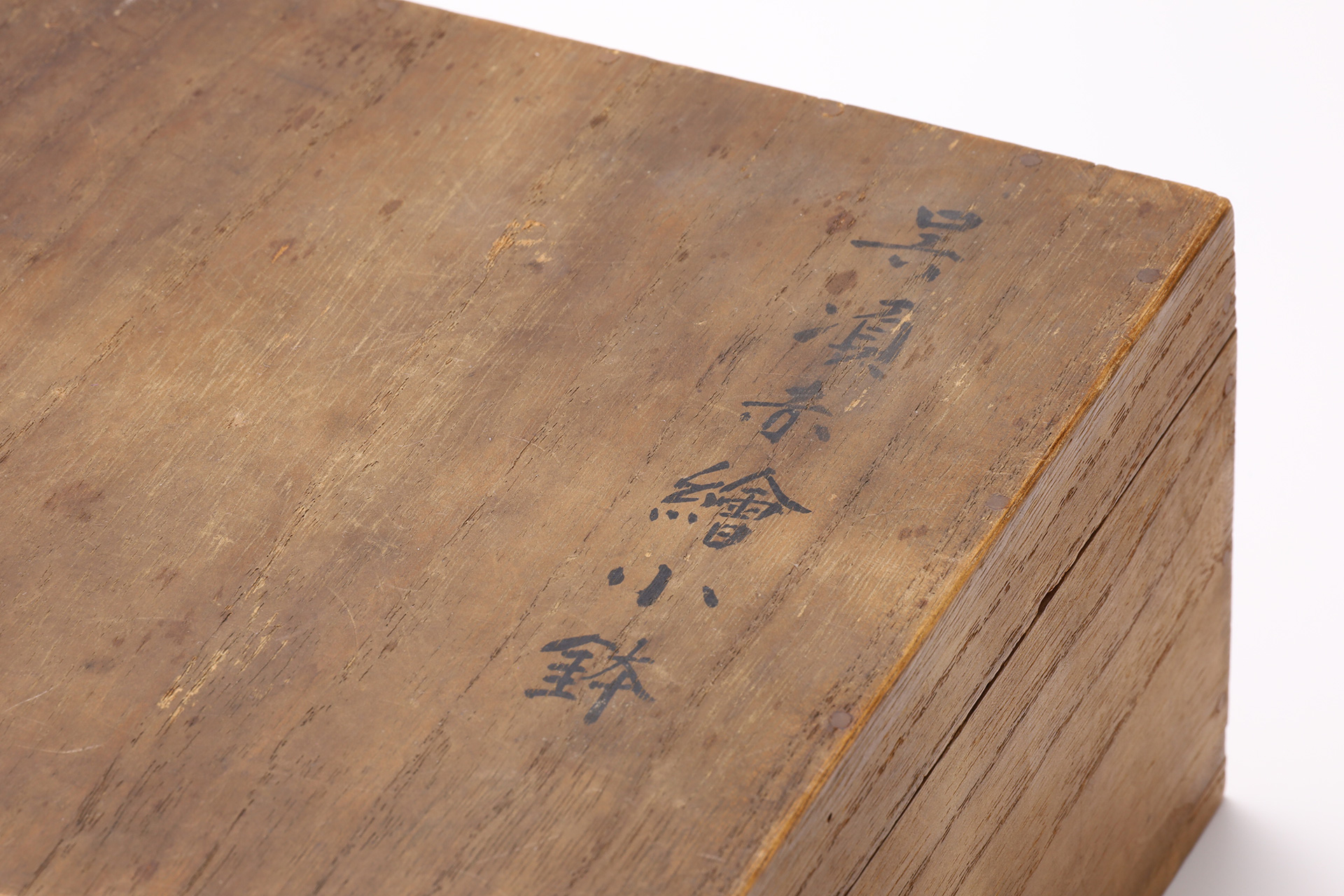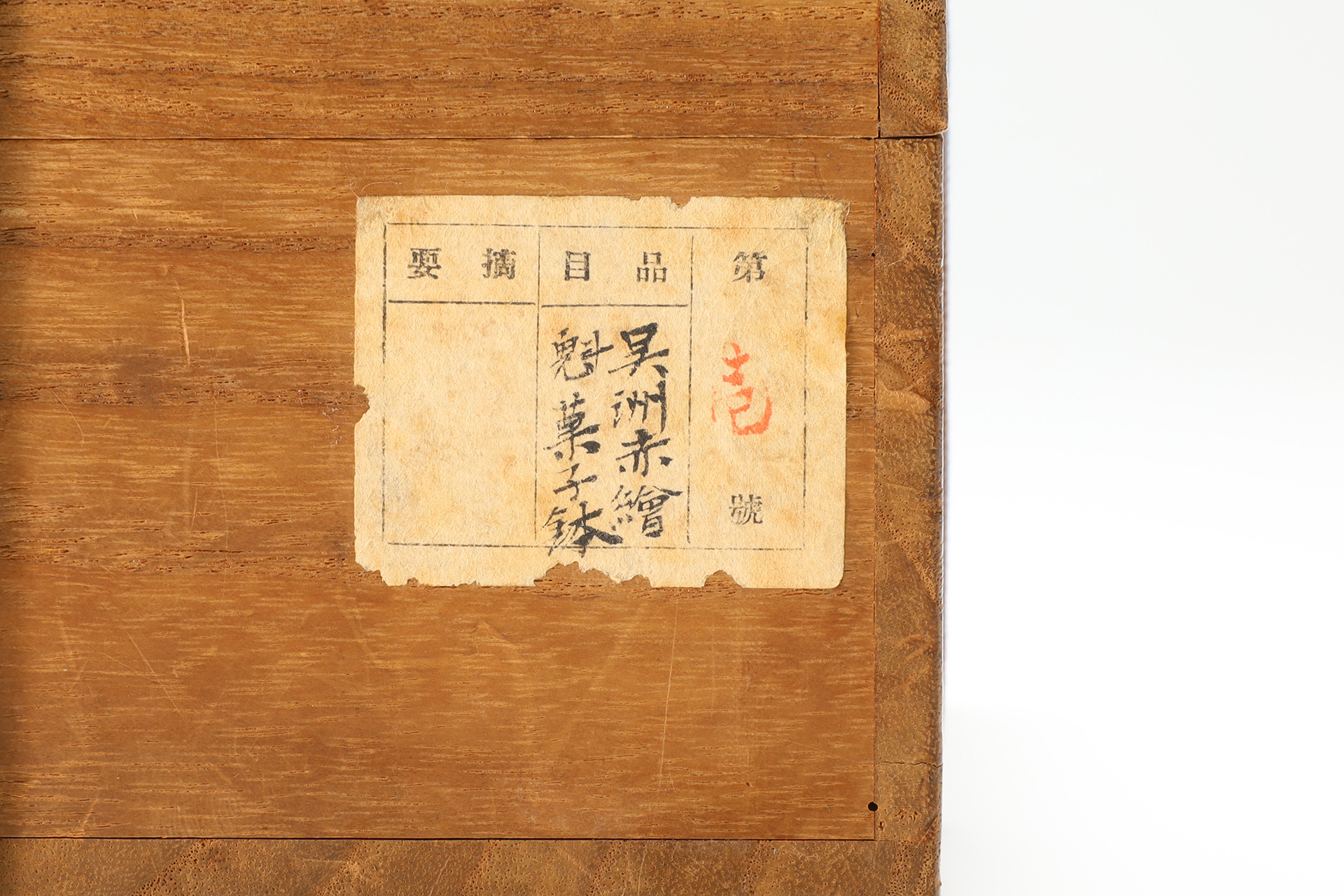This is a free spirited, light and stylish gosu-akae with flower and bird desig covering the entire exterior. It is also called "Sakigakede" due to the characters written inside, and is highly valued as the sweets bowl for the tea ceremony. Most of them are large bowls, but they are nice and small in size.
Inquiry
- Product Code
- 240903-1
- Period
- Ming Dynasty
17th century
- Weight
- 425g
- Diameter
- 16.6cm
- Height
- 7.2cm
- Bottom Diameter
- 6.5cm
- Description
- Pouch
Old Wooden Box
- Condition
- Good Condition
There are signs of use overall, but it is in good condition.

Gosu-Akae
Gosu-akae refers to the overglaze enamels porcelain that were fired at the zhangzhou kiln in china, mainly during the late ming dynasty. The style is said to have been developed from the ko-akae and kinrande of the jingdezhen kiln. Basically, blue and white is not used, and a thick milky white devitrified glaze is applied inside and outside. The overglaze is based on red, with green and blue added, and the relaxed depiction gives a sense of style. On rare occasions, the red bead design is overlaid with gold leaf. One of the characteristics of the pottery is that it has sand attached to the bottom because it was fired with sand laid down on it. There are also examples of compositions depicting japanese characters for “Tenkaichi” and arabic characters, indicating that the main commercial areas were southeast asia and japan. Among them, gosu-akae is preferred and prized in japan, and japanese tea master especially value the tamatori-jishi bowl and sakigakede bowl.
Gosude
Gosude refers to the crude porcelain that were fired at the zhangzhou kiln in china, mainly during the late ming dynasty. Works such as gosu-akae, gosu-sometsuke, and mochihanade are known, and the main trading area was southeast asia and japan. In europe and the united states, it is called “Swatow Ware” after its export port, shantou port in guangdong province. The most likely theory is that during the edo period, southern china was called “Go” so it came to be called “Gosude” meaning pottery from southern china.



